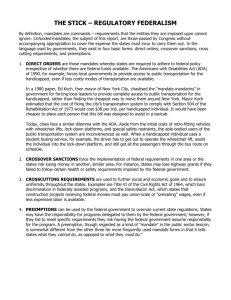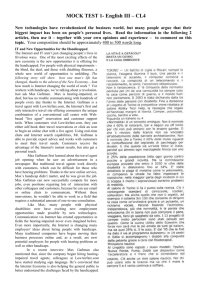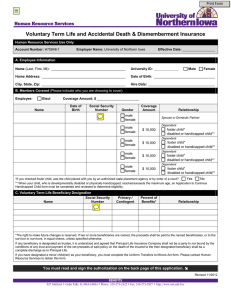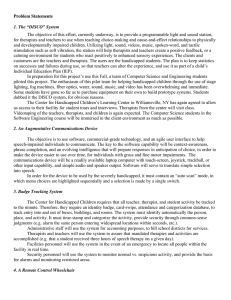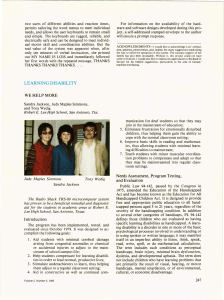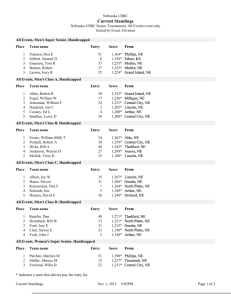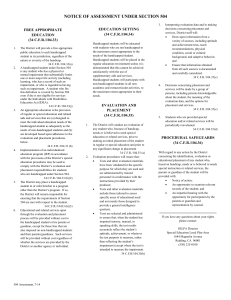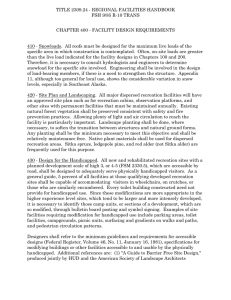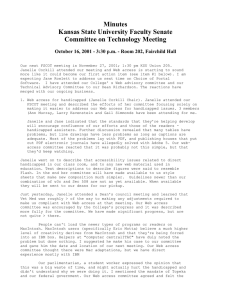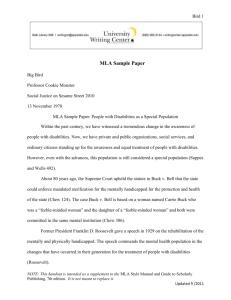Section 504 - Southern Berkshire Regional School District
advertisement
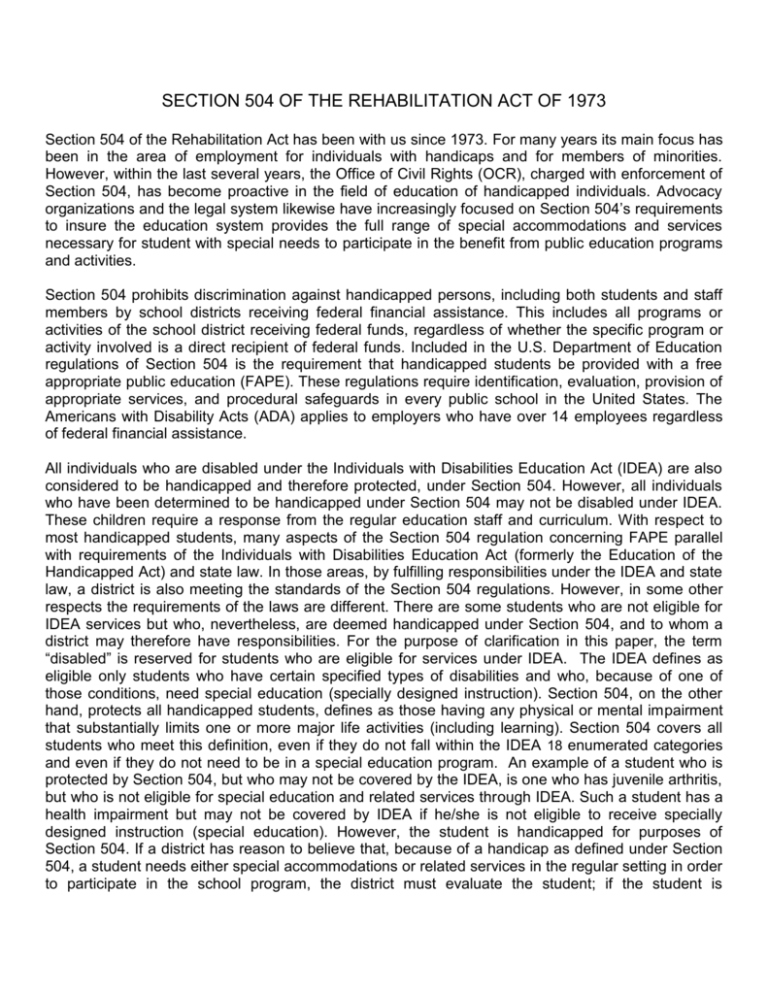
SECTION 504 OF THE REHABILITATION ACT OF 1973 Section 504 of the Rehabilitation Act has been with us since 1973. For many years its main focus has been in the area of employment for individuals with handicaps and for members of minorities. However, within the last several years, the Office of Civil Rights (OCR), charged with enforcement of Section 504, has become proactive in the field of education of handicapped individuals. Advocacy organizations and the legal system likewise have increasingly focused on Section 504’s requirements to insure the education system provides the full range of special accommodations and services necessary for student with special needs to participate in the benefit from public education programs and activities. Section 504 prohibits discrimination against handicapped persons, including both students and staff members by school districts receiving federal financial assistance. This includes all programs or activities of the school district receiving federal funds, regardless of whether the specific program or activity involved is a direct recipient of federal funds. Included in the U.S. Department of Education regulations of Section 504 is the requirement that handicapped students be provided with a free appropriate public education (FAPE). These regulations require identification, evaluation, provision of appropriate services, and procedural safeguards in every public school in the United States. The Americans with Disability Acts (ADA) applies to employers who have over 14 employees regardless of federal financial assistance. All individuals who are disabled under the Individuals with Disabilities Education Act (IDEA) are also considered to be handicapped and therefore protected, under Section 504. However, all individuals who have been determined to be handicapped under Section 504 may not be disabled under IDEA. These children require a response from the regular education staff and curriculum. With respect to most handicapped students, many aspects of the Section 504 regulation concerning FAPE parallel with requirements of the Individuals with Disabilities Education Act (formerly the Education of the Handicapped Act) and state law. In those areas, by fulfilling responsibilities under the IDEA and state law, a district is also meeting the standards of the Section 504 regulations. However, in some other respects the requirements of the laws are different. There are some students who are not eligible for IDEA services but who, nevertheless, are deemed handicapped under Section 504, and to whom a district may therefore have responsibilities. For the purpose of clarification in this paper, the term “disabled” is reserved for students who are eligible for services under IDEA. The IDEA defines as eligible only students who have certain specified types of disabilities and who, because of one of those conditions, need special education (specially designed instruction). Section 504, on the other hand, protects all handicapped students, defines as those having any physical or mental impairment that substantially limits one or more major life activities (including learning). Section 504 covers all students who meet this definition, even if they do not fall within the IDEA 18 enumerated categories and even if they do not need to be in a special education program. An example of a student who is protected by Section 504, but who may not be covered by the IDEA, is one who has juvenile arthritis, but who is not eligible for special education and related services through IDEA. Such a student has a health impairment but may not be covered by IDEA if he/she is not eligible to receive specially designed instruction (special education). However, the student is handicapped for purposes of Section 504. If a district has reason to believe that, because of a handicap as defined under Section 504, a student needs either special accommodations or related services in the regular setting in order to participate in the school program, the district must evaluate the student; if the student is determined to be handicapped under Section 504, the district must develop and implement a plan for the delivery of all needs services. Southern Berkshire Regional School District has a Response to Intervention/Instructional Support Team (RtI/IST) process for identifying and supporting student needs, in addition to the Special Education Referral and Eligibility processes. The determination of what services are needed must be made by a group of persons knowledgeable about the student. The group should review the nature of the handicap, how it affects the student’s education, whether specialize services are needed, and if so, what those services are. If a student demonstrates a handicapping condition the meets the requirements outlined here, please follow the procedures that are in place within the district. In summary, it is important to keep in mind that some students have physical or mental conditions that limit their ability to access and participate in the education. Again, these steps must be taken even though the student is not covered by the IDEA special education provisions and procedures. What is required for the Section 504 evaluation and placement process is determined by the type of handicap believed to be present and the type of services the student may need. The evaluation must be sufficient to accurately and completely assess the nature and extent of the handicap, and the recommended services. Evaluations more limited than a full special education evaluation may be adequate in some circumstances. For example, the case of the student with juvenile arthritis, the evaluation might consist of the school nurse meeting with the parent and reviewing the student’s current medical records. In other cases, additional testing may be necessary. The decisions about Section 504 eligibility and services must be documented in the student’s file and reviewed at least annually. . .
